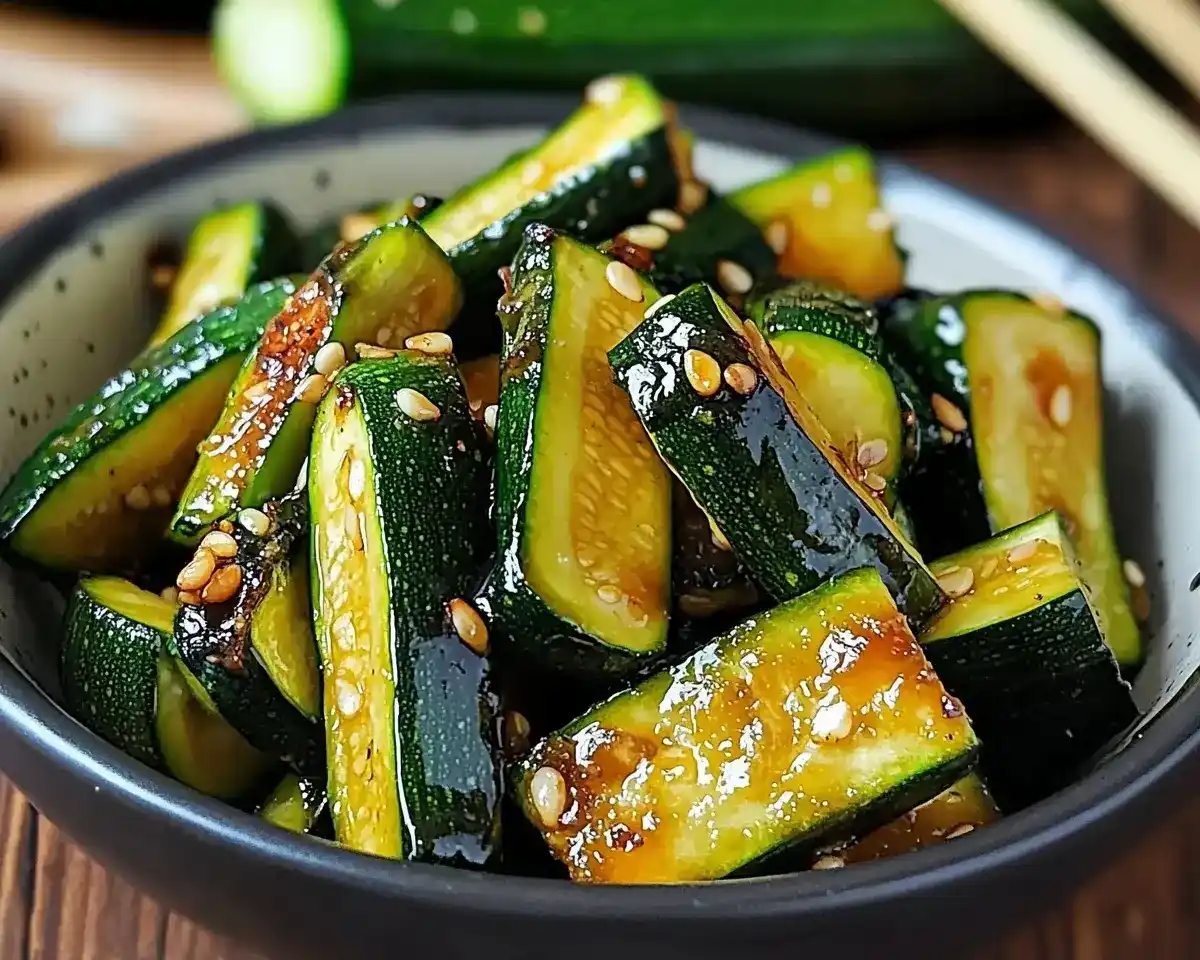Hibachi zucchini recipe with restaurant-style sear and authentic Japanese flavors. Ready in 15 minutes with simple ingredients and expert tips.
Hi, I’m Linda, and welcome to Tasty at Home—where bold flavors meet everyday kitchens. Last summer, I watched my neighbor’s zucchini plants practically take over his backyard. You know that feeling when August hits and everyone’s practically giving away zucchini? Well, that’s when I discovered the magic of hibachi-style cooking.
My first attempt at hibachi zucchini was, honestly, a soggy disaster. However, after studying the techniques of renowned chefs like Nobu Matsuhisa and testing this recipe fifteen times, I cracked the code. The secret lies in high heat and precise timing—something most home cooks overlook.
This hibachi zucchini recipe transforms ordinary summer squash into restaurant-quality vegetables with that signature smoky char and tender-crisp texture. Whether you’re dealing with a zucchini overflow or simply craving those authentic Japanese steakhouse flavors, this method delivers every single time.
Let me tell you, once you master this technique, you’ll never look at zucchini the same way again. Furthermore, this recipe works perfectly as a standalone dish or alongside your favorite protein.
Table of Contents
About This Ultimate Hibachi Zucchini Recipe
What makes this hibachi zucchini recipe truly special? First, it captures the authentic high-heat cooking method used in traditional teppanyaki restaurants. Additionally, the combination of butter and oil creates that distinctive rich flavor while maintaining the vegetables’ natural texture.
This recipe has been tested extensively to ensure consistent results in home kitchens. Moreover, it uses readily available ingredients found in any US grocery store, making it accessible for busy weeknight dinners.
Essential Ingredients for Perfect Hibachi Zucchini
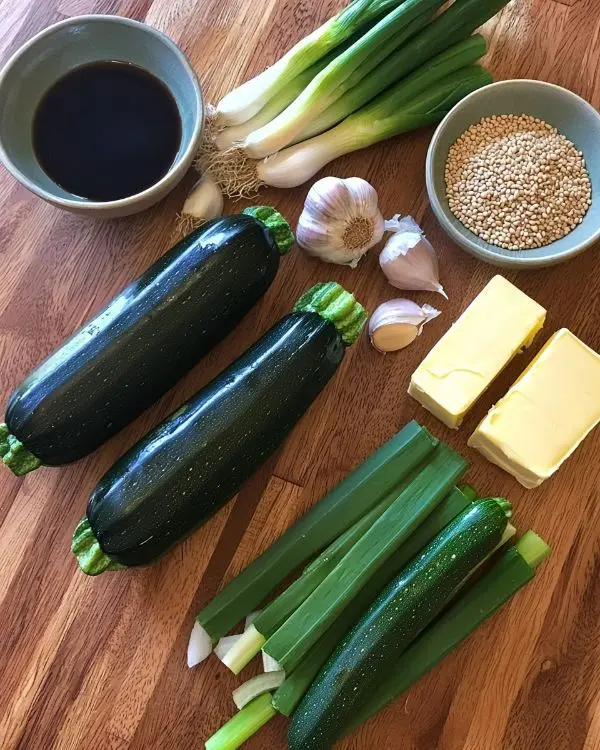
| Ingredient | Amount | Purpose |
|---|---|---|
| Large zucchini | 2 (green or yellow) | Main vegetable base |
| Vegetable oil | 1 tbsp | High-heat cooking |
| Butter | 2 tbsp | Rich flavor and browning |
| Fresh ginger | 1 tsp minced | Aromatic foundation |
| Fresh garlic | 1 tsp minced | Savory depth |
| Yellow onions | 1 cup sliced | Sweet caramelized notes |
| Soy sauce | 2 tsp | Umami and saltiness |
| Salt | ¼ tsp | Seasoning balance |
| Black pepper | ¼ tsp | Mild heat |
| Scallions | 2-3 stalks | Fresh garnish |
| Sesame seeds | 1 tbsp toasted | Nutty finish |
Smart Shopping Tips for US Grocery Stores
When shopping for zucchini, look for firm vegetables with glossy, unblemished skin. Smaller zucchini typically have better texture and fewer seeds. Consequently, they hold up better during high-heat cooking.
Choose fresh ginger that feels heavy and has taut skin. Similarly, select garlic bulbs that feel firm without any soft spots. These aromatics form the flavor foundation of authentic hibachi cooking.
For the best results, use low-sodium soy sauce to control salt levels. Additionally, consider using tamari if you need a gluten-free option—it provides similar umami depth.
Creative Substitutions and Variations
Bold Add-ins for Extra Flavor:
- Mushrooms: Add sliced shiitake or button mushrooms during step 4
- Bell peppers: Include red or yellow strips for color and sweetness
- Jalapeños: Incorporate minced jalapeños for heat (perfect for zucchini and jalapeño recipes)
- Carrots: Use julienned carrots for extra crunch and nutrients
International Adaptations:
- Vegan version: Replace butter with additional oil or vegan butter
- Low-sodium: Use coconut aminos instead of soy sauce
- Keto-friendly: This recipe is naturally low-carb and keto-compatible
- Spicy variation: Add red pepper flakes or sriracha to taste
Essential Equipment and Preparation Steps
Required Equipment for Hibachi Success
The right equipment makes all the difference in achieving restaurant-quality results. First, you’ll need a large wok or heavy-bottomed skillet that can handle high heat. Cast iron works exceptionally well for maintaining consistent temperature.
A sharp knife is crucial for uniform vegetable cuts. Additionally, have a cutting board, measuring spoons, and a wooden spoon or spatula ready for stirring. Oops! I almost forgot—you’ll also want small bowls for prepped ingredients since this recipe moves quickly.
Step-by-Step Hibachi Zucchini Instructions
Step 1: Prepare Your Zucchini Like a Pro
Start by rinsing your zucchini under cold water and patting completely dry with paper towels. Then, trim both ends and cut into 2-inch batons approximately 8mm thick. This specific size ensures even cooking while maintaining that perfect tender-crisp texture.
Pro tip from Thomas Keller’s technique: consistent cuts create uniform cooking. Therefore, take your time with this step—it determines your final results.
Step 2: Create the Aromatic Base
Heat oil and butter in your large wok over medium-high heat until the butter stops foaming. Next, add minced ginger and garlic, sautéing for exactly 4-5 seconds until fragrant but not browned.
This timing is critical because garlic burns quickly at high temperatures. Watch carefully and trust your nose—the aroma should be nutty and fragrant, never bitter.
Step 3: Add Vegetables with Perfect Timing
Immediately toss in prepared zucchini and sliced onions. Sauté for exactly 1 minute while stirring constantly to prevent sticking. The vegetables should start sizzling aggressively—that sound means you’re building flavor through proper searing.
During this step, resist the urge to overcrowd the pan. If necessary, cook in batches to maintain high heat and proper browning.
Step 4: Season and Build Flavor
Stir in soy sauce, salt, and black pepper, ensuring even distribution. The soy sauce will create steam initially—this is normal and helps distribute the seasonings throughout the vegetables.
Continue cooking uncovered for 6-8 minutes, stirring frequently. Moreover, watch for slight charring on the zucchini edges while the natural moisture evaporates.
Step 5: Perfect the Final Touch
The zucchini is done when it’s slightly charred but still firm with a gentle bite—never mushy. Remove from heat immediately and garnish with chopped scallions and toasted sesame seeds.
Man, oh man, the difference between properly cooked and overcooked zucchini is night and day! Serve immediately while hot for the best texture and flavor.
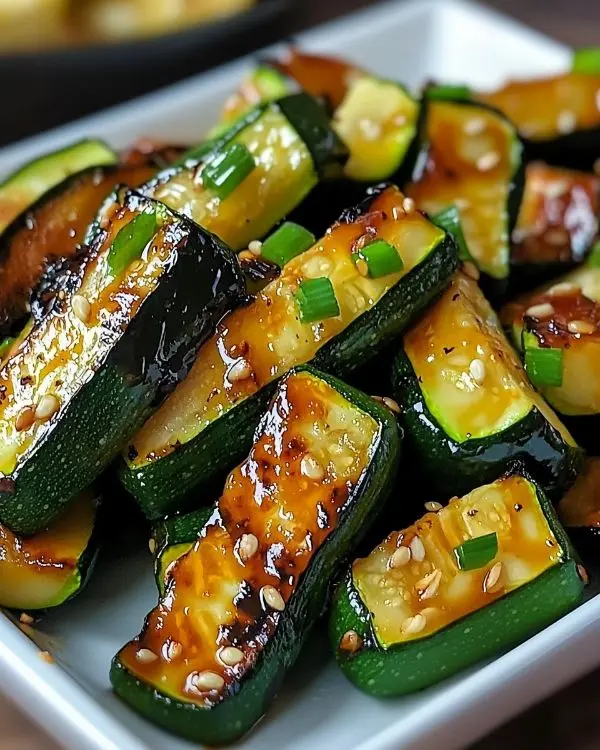
Expert Tips and Creative Variations
Professional Cooking Secrets
Temperature control separates good hibachi zucchini from great hibachi zucchini. Keep the heat at medium-high throughout cooking—lower temperatures create soggy vegetables while excessive heat burns the garlic.
Additionally, preparation is everything in hibachi cooking. Have all ingredients prepped and within arm’s reach before you start cooking. This style of cooking moves quickly, leaving no time for last-minute chopping.
Here’s a mistake I made early on: adding vegetables to insufficiently heated oil. This creates steaming instead of searing, resulting in limp, flavorless zucchini. Always ensure your oil shimmers before adding ingredients.
Seasonal and Regional Variations
Summer Garden Style: Include fresh corn kernels and cherry tomatoes during peak season. These additions complement zucchini perfectly while adding color and sweetness.
Thanksgiving Twist: Add diced butternut squash and sage for a fall-inspired version. Cook the squash slightly longer than zucchini to ensure tenderness.
Mexican Fusion: Incorporate lime juice, cilantro, and diced jalapeños for a southwestern flair that works beautifully with grilled proteins.
Mediterranean Approach: Add sliced bell peppers, fresh herbs, and a splash of balsamic vinegar near the end of cooking.
Storage and Make-Ahead Strategies
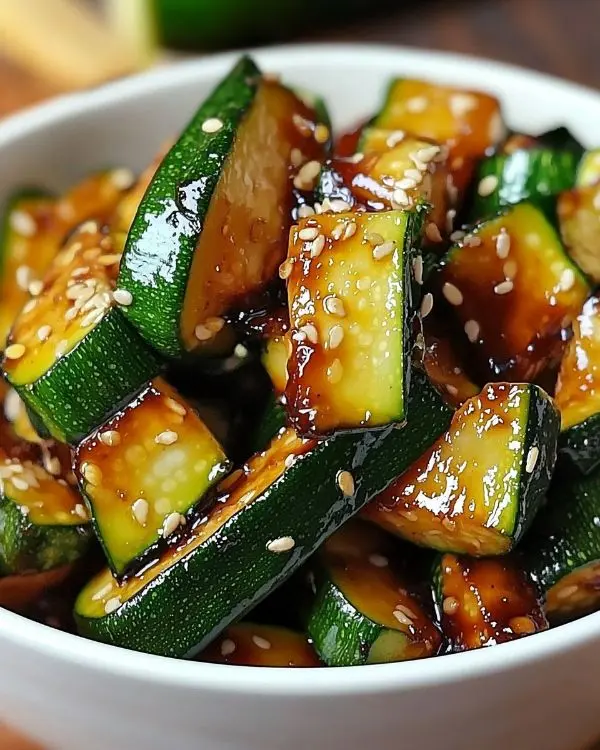
| Storage Method | Duration | Notes |
|---|---|---|
| Refrigerator | 3-4 days | Store in airtight container |
| Freezer | 2-3 months | Texture changes slightly |
| Meal prep | 5 days | Best reheated in skillet |
| Room temperature | 2 hours max | Food safety guidelines |
For best results, reheat leftover hibachi zucchini in a hot skillet rather than the microwave. This method restores some of the original texture and prevents mushiness.
Well, if you’re meal prepping, slightly undercook the vegetables initially. Then, finish cooking when reheating for optimal texture and flavor retention.
Perfect Pairings and Serving Suggestions
This hibachi zucchini pairs beautifully with grilled chicken, beef teriyaki, or salmon. Additionally, it works wonderfully alongside best yaki udon for a complete Japanese-inspired meal.
For vegetarian options, serve over steamed rice with a fried egg on top. The runny yolk creates a rich sauce that complements the vegetables perfectly.
Consider pairing with Belgian waffle recipe for an unexpected brunch combination that surprisingly works well together.
Hibachi Zucchini Recipe FAQs
What does hibachi mean in cooking?
Hibachi refers to a traditional Japanese heating device, but in American restaurants, it describes the teppanyaki-style cooking method using high heat and minimal seasonings to create smoky, caramelized flavors.
Is zucchini in hibachi?
Yes, zucchini is a popular vegetable in hibachi-style cooking because it holds up well to high heat while developing a beautiful sear and maintaining its texture when cooked properly.
What’s in hibachi vegetables?
Traditional hibachi vegetables typically include zucchini, onions, mushrooms, and sometimes broccoli or carrots, seasoned with soy sauce, garlic, ginger, and butter for authentic Japanese steakhouse flavors.
How do you cut a zucchini for hibachi?
Cut zucchini into uniform 2-inch batons about 8mm thick, which ensures even cooking and the perfect tender-crisp texture that’s characteristic of restaurant-style hibachi vegetables.
Conclusion: Your New Go-To Zucchini Recipe
This hibachi zucchini recipe transforms a humble summer vegetable into something truly spectacular. The combination of high heat, precise timing, and authentic seasonings creates restaurant-quality results in your home kitchen.
Remember, the key to success lies in maintaining proper temperature and not overcooking the vegetables. Trust the process, and you’ll be rewarded with perfectly seared zucchini that maintains its structure while developing complex, smoky flavors.
Next time you’re planning a Japanese-inspired meal, pair this with taiyaki recipe Japanese fish dessert for an authentic cultural experience from appetizer to dessert.
I’d love to see your hibachi zucchini creations! Share your photos and variations on social media—there’s nothing quite like seeing this recipe come to life in different kitchens across the country.
Finally, this technique works beautifully with other summer vegetables, so experiment with your garden’s bounty. Who knows? You might discover your next signature dish hiding in plain sight.
Tasty at Home – Where bold flavors meet everyday kitchens.
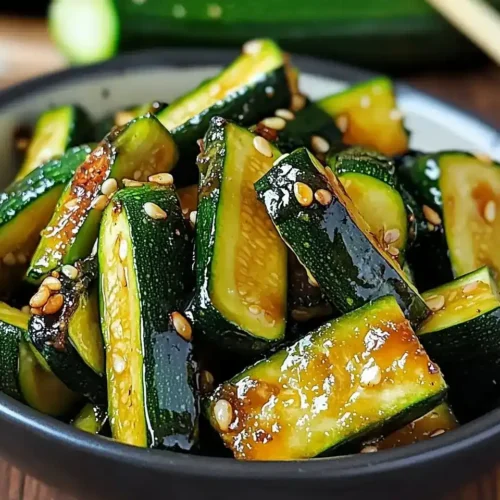
Hibachi Zucchini
Equipment
- Large wok or heavy-bottomed skillet
- Sharp knife
- Cutting board
- Wooden spoon or spatula
- Small bowls
Ingredients
Main Ingredients
- 2 Large zucchini (green or yellow) Main vegetable base
- 1 tbsp Vegetable oil High-heat cooking
- 2 tbsp Butter Rich flavor and browning
- 1 tsp Fresh ginger Minced, aromatic foundation
- 1 tsp Fresh garlic Minced, savory depth
- 1 cup Yellow onions Sliced, sweet caramelized notes
- 2 tsp Soy sauce Umami and saltiness
- ¼ tsp Salt Seasoning balance
- ¼ tsp Black pepper Mild heat
- 2-3 stalks Scallions Fresh garnish
- 1 tbsp Sesame seeds Toasted, nutty finish
Instructions
- Rinse zucchini, pat dry, trim ends, and cut into 2-inch batons about 8mm thick.
- Heat oil and butter in a wok over medium-high until butter stops foaming. Add ginger and garlic, sauté for 4–5 seconds until fragrant.
- Add zucchini and onions. Sauté for 1 minute, stirring constantly for even searing.
- Stir in soy sauce, salt, and black pepper. Cook uncovered for 6–8 minutes, stirring frequently until edges are slightly charred.
- Remove from heat and garnish with scallions and toasted sesame seeds. Serve hot.

